Consumer Poinsettia Preference
“I did not know there were so many different poinsettias,” is a very common comment from first-time visitors at the University of Florida Poin-settia Open House. I also hear a lot of, “I thought there were only red or white poinsettias.” And then inevitably comes, “Why can’t I find these in the stores?”
A main theme in poinsettias over the last 5-6 years has been more diversity of color and style. The “odd ball” and unusual plants that show up in poinsettia breeding had always been tossed out by breeders because “that is not the way a poinsettia is supposed to look.” But now, the breeders are screening varieties with a different eye; it seems like the more unusual, the better. With so much change in the world of poinsettias, I thought some indication of consumer preference might help you place your orders for the 2005 holiday season.
About our Open House
The University of Florida participates with Purdue University, North Carolina State University and Homewood Gardens in Raleigh, N.C., to conduct the National Poinsettia Variety Trials that are sponsored by the five main poinsettia breeding companies from the United States and Europe. An important part of the trials at each location is the evaluations done by the public.
Each location does its consumer evaluations differently, but at the University of Florida we invite the public to a one-day Poinsettia Open House. In an 8,000-sq.ft. greenhouse, we have displays of more than 100 commercial varieties. We also set up a survey where participants select their favorites from small groups of plants. The display plants are labeled with variety names; however, the survey plants do not have name labels.
Another component of our Open House is that, in an adjacent greenhouse, the student horticulture clubs sell plants they have grown. This allows us to see both what the consumers pick in surveys and what they buy. We also get an idea of how much consumers will pay for a particular variety. Because of limited space, we do no advertising other than sending out an announcement to our mailing list. This year we had about 450 attendees at our sale, and the average purchase was $27.50. So, our group of consumers likes poinsettias and appreciates the diversity that we offer.
Popular Varieties
Over the eight years we have been doing the Poinsettia Open House, we have learned several lessons from and about our poinsettia consumers. The first lesson was obvious immediately and is reinforced every year that consumers are not all alike; they are very different, and they have very different preferences.
Because red is so important and is very traditional, there is a tendency for growers and retailers to over emphasize it, to the dismay of those “non-red” consumers. But, even within reds, not all varieties are the same. Because ‘Freedom Red’ quickly became the dominant variety in most of the country after it was introduced in the early 90s, many in the industry developed the feeling that all red poinsettias should be the same dark, bluish-red color and have large bracts that cover the entire plant. If our consumers are shown just ‘Freedom Red’ they will give it a high rating; after all, they like poinsettias, and it is a good plant. However, if our consumers are shown 10 different red varieties, Freedom is in the bottom 25 percent of those picked every year.
There are different reasons for this. Some consumers prefer a plant, such as ‘Prestige’, ‘Mars’ or ‘Sonora Red’, with a mix of red and green showing rather than being solid red across the top. Another look that many people like is the “oak leaf” appearance of the leaves and bracts of varieties such as ‘Sonora Red’, ‘Pepride Red’ and ‘Chianti’.
A general preconceived idea is that U.S. consumers do not like orange-red poinsettias, which are favored in Europe; however, when we put a bluish-red plant and an orange-red plant in front of consumers, over 40 percent will pick the orange-red. This year, when picking three favorites out of 10 reds, 63 percent included an orange-red in their three. ‘Happy Christmas’ is a new variety with a slightly orange-red color that makes it look very bright. ‘Cortez Electric Fire’ is a new variety that has the strongest orange color and is too orange for most consumers but some do like it.
Among the reds, the variety picked most often the past two years is ‘Merlot’. No one would confuse ‘Merlot’ and ‘Freedom Red’. ‘Merlot’ has smaller than average leaves and bracts, and the bracts are held up at different angles. So, the plant has much more of an open, uneven appearance, making the color a deep wine red.
This brings up another lesson from our consumers that violates another of the industry’s preconceived ideas. Many consumers actually prefer plants that have character rather than ones with uniform shape or ones that look like all of the others. ‘Winter Rose Dark Red’ naturally has uneven shoot growth, and most growers use chemical treatments to produce more uniformly shaped plants. However, most consumers tell us they like the plants with flowers at different levels in the canopy. The jingle bells types are notorious for sporting to off-types, and many producers prefer not to grow them because of that. However, many consumers love the jingle bells type plants and will pay more for good ones. The best varieties are ‘Shimmer Surprise’ (every plant is unique, hence the name), ‘Sonora White Glitter’, ‘Jingle Bells 3’ and ‘Sonora Jingle’. ‘Sonora White Glitter’ and ‘Shimmer Surprise’ have been among the highest rated varieties in most trials the past couple of years.
The following are some of the most popular varieties in the National Poinsettia Variety Trials, as selected by consumers over the past few years.
- ‘Marblestar’
- ‘Cortez Burgundy’
- ‘Monet Twilight’
- ‘Plum Pudding’
- ‘Shimmer Surprise’
- ‘Sonora White Glitter’
- ‘Strawberries & Cream’
- ‘Visions of Grandeur’
- ‘Merlot’
- ‘Winter Rose Dark Red’
- ‘Chianti’
- ‘Happy Christmas’
- ‘Santa Clause Pink’
A Bit About Price
The plants our students sell are predominately in 61?2-inch pots and measure 15-17 inches in diameter. They price reds at $7.50 (yes, that is under priced); whites and pinks at $10; marbles, Winter Rose and other novelties at $12-15; and high demand/low supply varieties at $20-25.
One lesson we have learned from consumers is to sell plants by name. Many of our repeat consumers come in saying they want a certain variety ‘White Christmas’, ‘Red Elf’, ‘Monet’, ‘Plum Pudding’, ‘Cortez Burgundy’, etc. When the consumer knows the plant name it becomes special and not “just another poinsettia.” This is especially important for novelties for which you are trying to get a higher price. ‘Kris Kringle’ (a new red variety with crinkled bracts) was rated high in the surveys; however, when it was placed on the red bench without any special identification or promotion it did not sell, while the other reds did.
The $25 bench this year was mostly stocked with the new ‘Visions of Grandeur’. We wanted to see how it sold compared to ‘Shimmer Surprise’, ‘Sonora White Glitter’ and ‘Cortez Burgundy’. Whenever Burgundy was on the bench it sold first. Without Burgundy on the bench, ‘Shimmer Surprise’ sold first. When ‘Visions of Grandeur’ was the only variety on the bench it moved without any problem.
In today’s market it is important for independent garden centers to differentiate their product from the mass market retailers. In mass market, about 85 percent of the plants are red, and the other 15 percent is just another color that is easy Á to produce usually pink or white. Many of the novelty colors and interesting new reds are a little more difficult to grow. Thus, consumers are less likely to see these in mass-market. ‘Monet Twilight’, ‘Cortez Burgundy’, ‘Sonora White Glitter’, ‘Santa Claus Pink’ and ‘Santa Claus Marble’ are some examples. ‘Chianti’, ‘Merlot’ and ‘Happy Christmas’ are reds that are different and not commonly seen in mass markets.
Our student sales are successful because we are catering to consumers who will pay more for something that is different. These consumers get excited because they see all the diversity of color and style and get to pick the plants they feel are special. These are ideal poinsettia customers because they like to try new things and will pay for the privilege. It’s up to you to profile your customers and tailor your poinsettia selections for them.

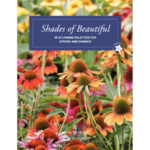
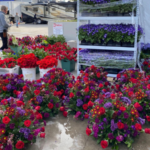



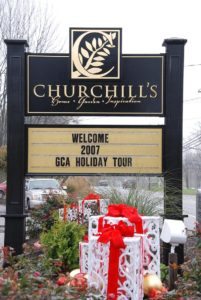

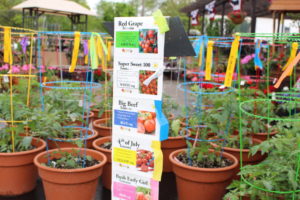

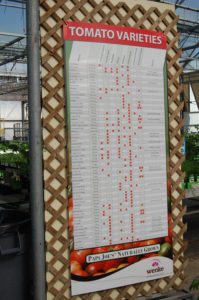
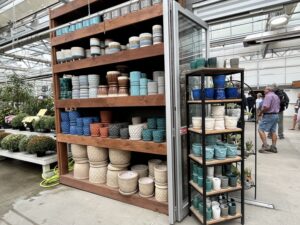
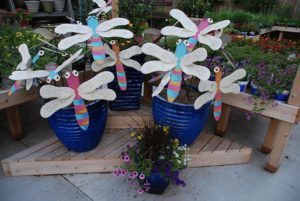
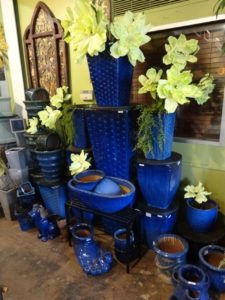
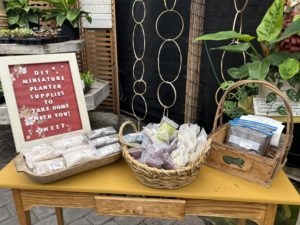

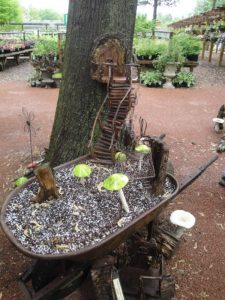
 Videos
Videos





